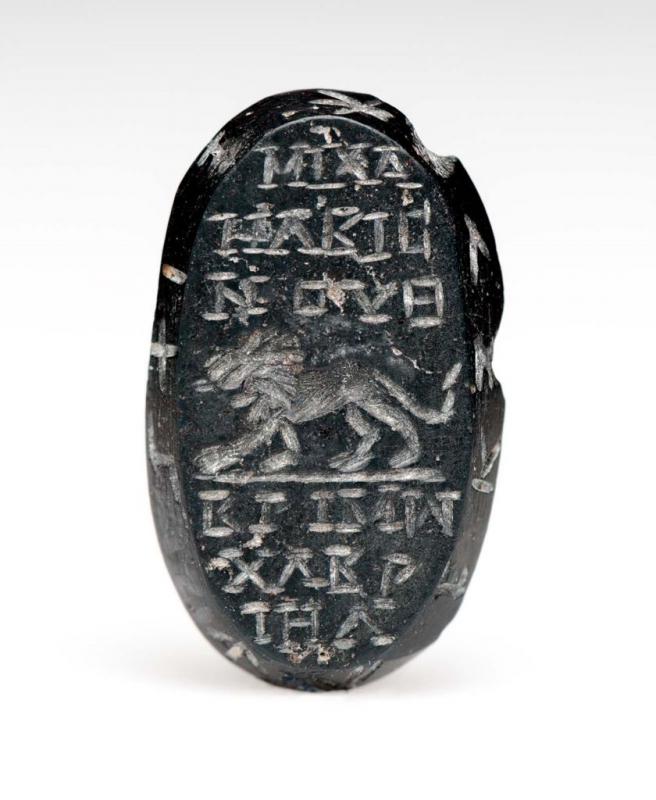Bonner, SMA, 57.
examined here. On its reverse the Ruthven amulet has after the name Χνοῦβις the words νααβις βιενυθ, separated from the following words by a peculiar sign, a chi with dots in the four angles formed by the letter.26 These two words were also on the other stone, though the break has taken all but the letters υθ. The phrase has been explained by Kopp as an equivalent in Greek letters of the Hebrew hb, which he renders “bound by charms.”27 That idea is not unsuitable, since many magical formulas are meant to compel a god or a demon to do the will of the person who writes or speaks them; but the transliteration is inexact, and Semitic scholars may object to Kopp's interpretation of the second word. The most that can be said is that the interpretation is possible if allowance be made for some latitude in the meaning of hb and in the mode of transferring Hebrew sounds into Greek letters. However that may be, the phrase has been found chiefly in connection with the name Chnoubis, and it occurs on several specimens with slight variations in spelling, such as ναβις, βιεννυθ, βιεννουθ.28
The following words, γιγαντορῆκτα and βαροφιτα, apparently meaning “breaker of giants” and “crusher of serpents,” will be discussed more fully in Chapter XIII.
Round the obverse of the Ruthven stone runs a long formula, σοροορμερφεργαρμαρμαφρειουριγξ. The babbling repetition of syllables in the middle of the formula shows plainly enough that it is meaningless, and its value may have lain partly in its power to impress the uninitiated by its mysterious sound; but it was evidently a recognized part of the magician's code, for it is to be seen on many amulets of the “uterine” type, of which, in fact, it is a characteristic mark. Its use may not have been confined to medicomagical purposes; it occurs in one magical papyrus, along with Iao, in a string of magical words, and in another as a name of “a daimon of the great god.”29 Its use on a Chnoubis amulet is surprising; but there is another interchange between these two amulet types, for the Chnoubis snake is frequently seen on uterine amulets. It is possible that in amulets intended for women the makers pretended to provide in one magical stone a remedy for various pains and disorders located in the abdomen.
All the formulas just mentioned are placed on the reverse of Mich. 26012 (D. 100). There are a few trivial differences in the execution of the inscription; the last ρ in the σοροορ formula has been omitted, and the engraver has put βαρβαροφιλα where the Ruthven stone has βαροφιτα. The λ is certainly a careless error, and so probably is the repetition of βαρ.30 The letters are alike in both stones, and they have a peculiarity in common:
26 The same mark is cut on the reverse of the amulet from Byblos.
27 Kopp, Pal. Crit., IV, 158.
28 The words Μιχαηλ βιενουθ (written βισνουθ), along with other magical names, are inscribed on a Boston haematite (D. 73). The design is a lion which seems to be holding a round object (a skull?) under its forepaw.
29 PGM IV, 1566; XII, 173. In the latter place the formula contains several errors.
30 Yet it occasionally occurs on other amulets. Perhaps such a form as βαρβαροφοντα was confused with βαροφιτα.
Last modified: 2012-11-05 10:40:13
Link: cbd.mfab.hu/pandecta/1496

